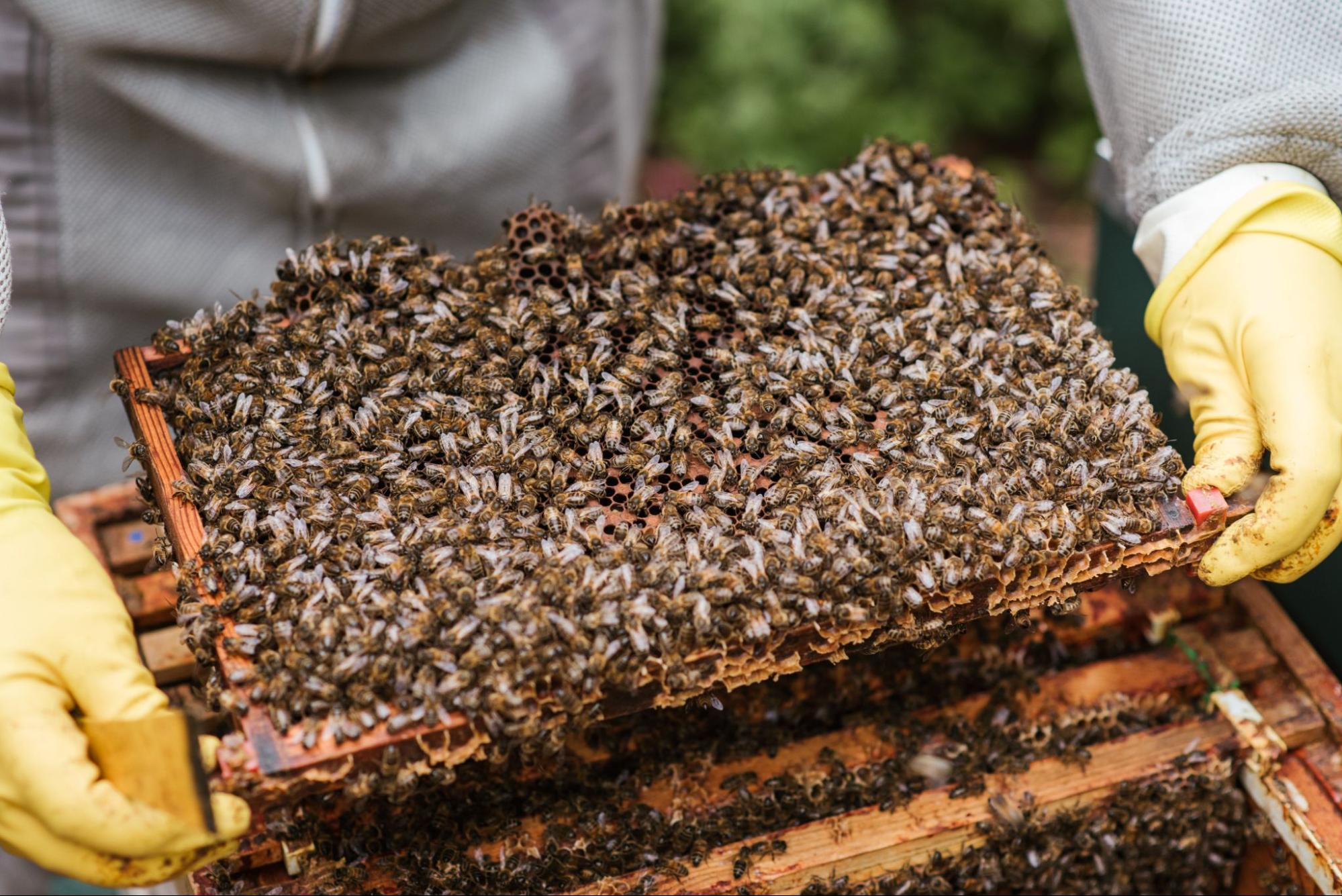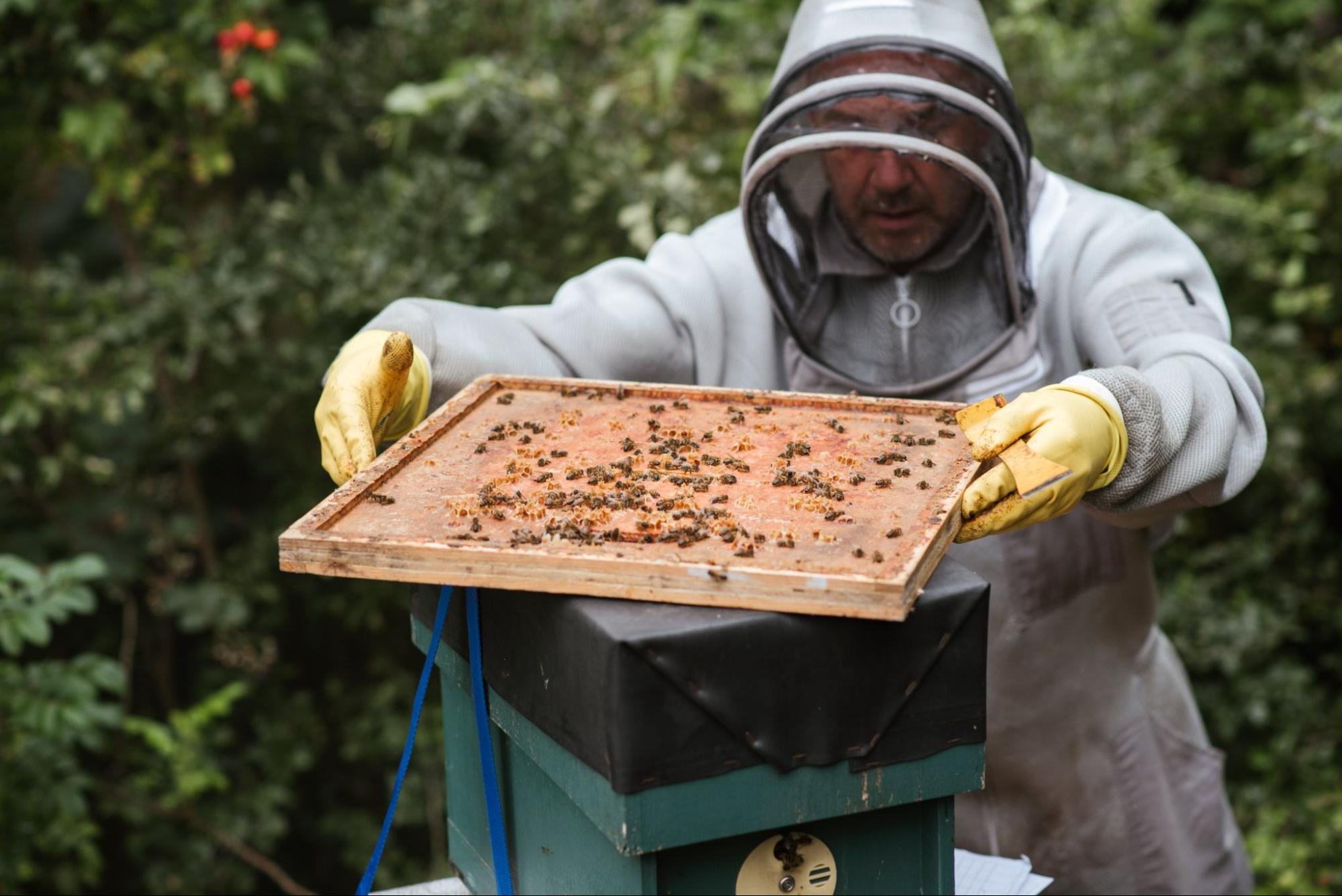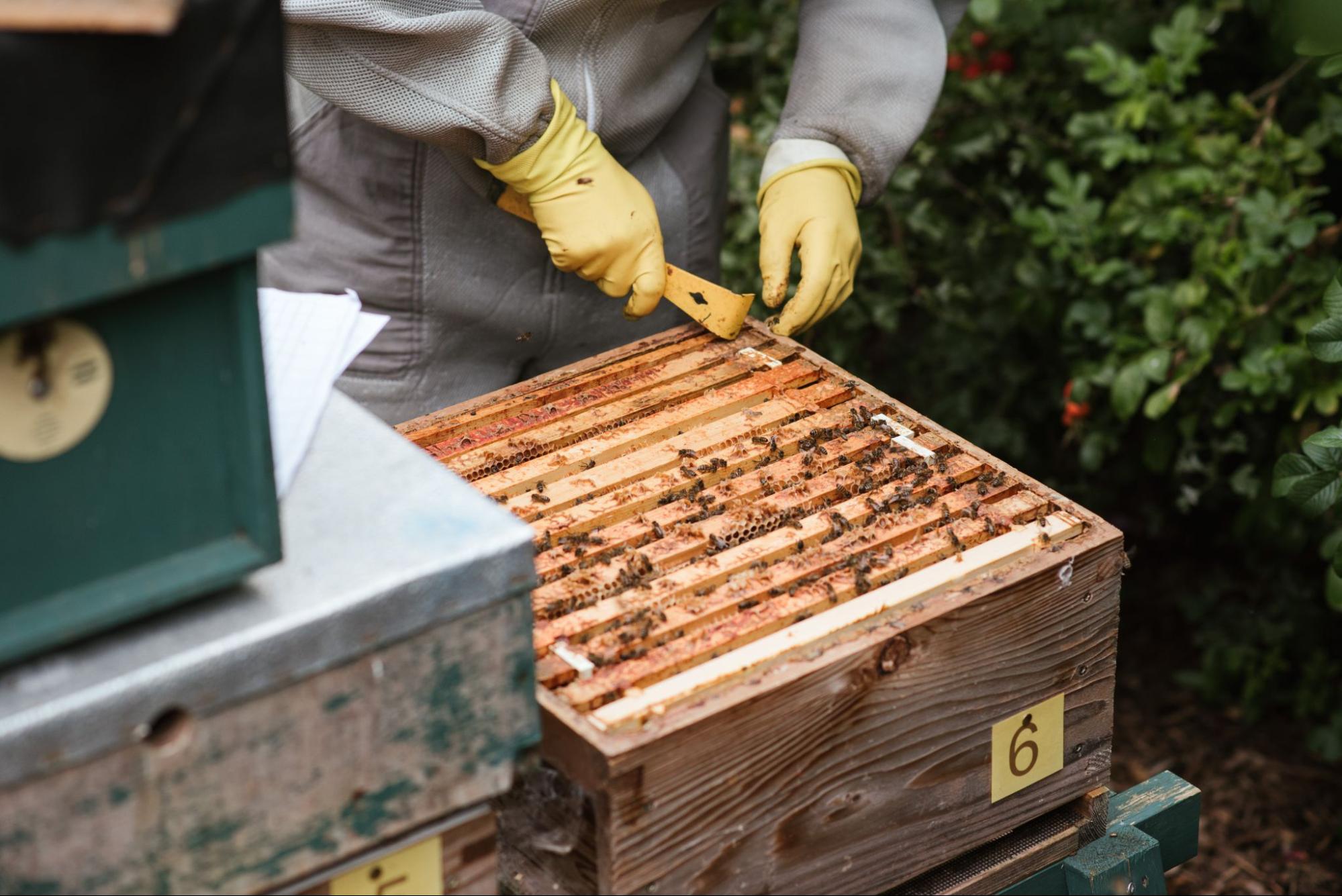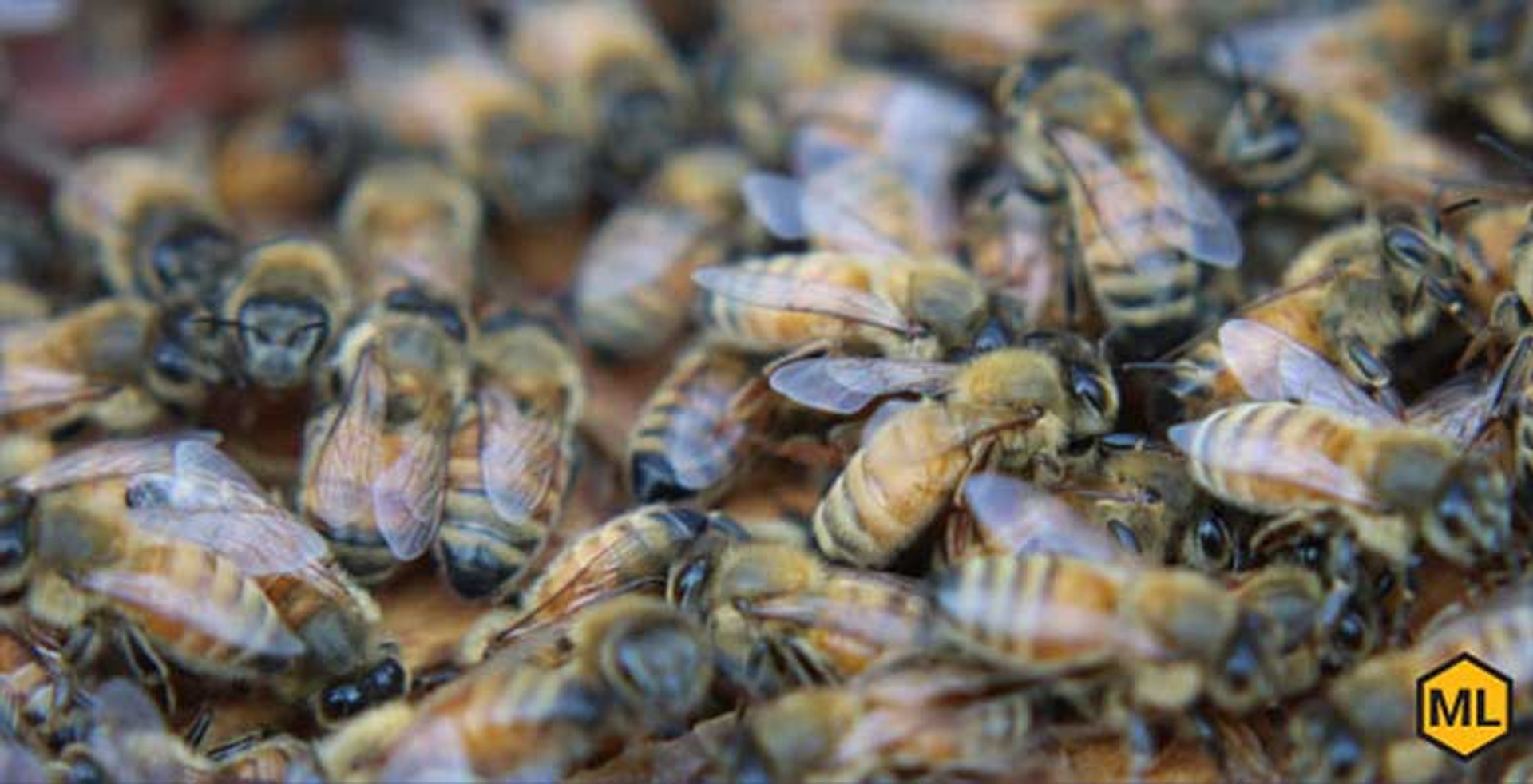How to Install Package Bees and Nucs
Bee season's here, and there's no shortage of questions about the best way to install package bees or nucs. Whether you’re a veteran or beginner beekeeper, a refresher always comes in handy. A how-to video is also thrown into the mix here for good measure.
For seasoned beekeepers, if there are some drawn combs just lying around, this is the perfect opportunity to put them to use. Dropping in a package on two or three of these prepped combs? Huge advantage. It’s a shortcut that gets the honey bees buzzing into action without needing to draw combs from the foundation first.
Installation of Packages
Install the package late in the afternoon to prevent drifting. Spray a little sugar syrup on the screen of the cage 15 minutes before you are ready to move them to the hive for installation. This quiets them down and will keep them calm for the installation.
There are several ways of installing a package of bees, and we recommend the following two methods.
Method 1
Strategically introduce a complete package of bees directly into the hive, ensuring a safe queen installation and colony establishment. Follow each step below meticulously for optimal results.
Preparation
Remove one frame from your hive and store it in a dry, cool place. This frame will be put back into your hive several days later. Tap the cage lightly a few times on the ground to jar all the bees to the bottom of the cage.
Do not let the queen cage slip down with the rest of the bees. With a firm grip on the can, remove it, pull the queen cage out of the package, and immediately put the lid back on the package.
Queen Inspection
Inspect your queen bee to confirm that she’s alive and in good condition. Carefully remove the cork from the candy end of the queen cage. The bees will release the queen from the cage by eating the candy (this usually takes a few days). You may choose to take a small nail and make a hole through the candy to expedite this process.
Placement and Package Emptying
Place the queen cage, screen side facing up, between frames five and six in the hive body. Again, tap the package lightly a few times on the ground to jar all the bees to the bottom of the cage. Remove the square lid and begin to gently shake the bees from the package over the tops of the frames and the queen cage.
Once you’ve shaken the bees from the package, place the inner cover over the hive upside down. You can now close your hive with the top cover. Place the package on the ground in front of the hive so the few remaining bees can fly out and into the hive.
Feeding and Hive Maintenance
You will need to feed your bees regularly. We suggest using a Boardman entrance feeder with package bees to prevent drowning. Open the can of syrup that came with the package and use the remaining syrup to feed.
Check the hive after about three days to confirm that the queen has been freed and is alive. If she’s still inside the cage, you can choose to leave her there a day or two longer or release her yourself.
To do this, hold the queen cage down inside the hive body and carefully pull back the screen to release her. Remove the queen cage, place the frame you removed before installation back inside the hive body box, and return the inner and outer cover.
Method 2
With this method, you don’t have to shake the bees from the package. Follow the same procedures in the first method, except remove five frames from your hive.
Place the queen cage, screen side facing up, between frames two and three in the hive body. Then, tap the cage lightly a few times on the ground to jar all the bees to the bottom. Remove the square lid and place the package down inside the hive body in the space of the frames you have removed.
In three days, make sure the queen has been released and is alive. Remove the queen cage and package, place the five frames you removed before installation back inside the hive body box, and return the inner and outer cover.
Four Important Points

Here are four important points that contribute significantly to the success of package bee installation and subsequent hive development:
- Prioritize feeding. Feed package bees heavily until the colony is well established. Sugar and water mixed in a 1:1 ratio or high fructose corn syrup works well for spring feeding.
- Maintain smaller entrances. Reducing the hive entrance size to a minimum prevents robbing by other bees and is crucial in conserving hive heat.
- Hold off on expansion. Refrain from adding supers or a second hive body until the bees have drawn out at least seven of the 10 frames in the existing setup.
- Regularly inspect the hive. Do a hive inspection to check the condition of the new hive on a weekly basis until the hive is well established.
Installing Bees from a Nuc

While it’s easier to install bees from nucs than a package, there is one crucial difference. You don’t know where the queen is, and you must avoid crushing her.
We suggest pulling all nuc frames from your hive box if you're using eight-frame equipment or eight frames if it's a 10-frame setup while leaving a frame against each side.
Here is a step-by-step guide to effectively carry out honey bee nucs installation:
- Position the nuc next to the open hive, and apply smoke when necessary.
- Reduce the entrance to the hive to which you’re transferring the frames of bees. This is a larger home for your bees. You want to make it easier for them to defend it, especially during these initial days of getting settled.
- Open the nuc box. You may want to gently smoke or spritz the bees with sugar syrup.
- Carefully remove one outside frame from the nuc box. Start with the outside frames first, as they are less likely to have the queen on them. Regardless, never pull a frame faster than a bee can amble. This will ensure you don’t kill the queen by rolling her.
- If the weather allows, we encourage you to look over each frame as you transfer it. Inspect the frame for the following:
- Color and size variations
- Drones vs. worker bees
- The queen. Finding the queen can be a challenge, even for an experienced beekeeper, so keep an eye out for her.
- Observe where the bees have drawn out comb and the sections they've ignored.
- Filled comb cells. Smooth, level caps indicate worker bees. Protruding caps could mean drone cells or, less likely, a queen cell.
- Place that frame in the same position in the hive body that it had in the nuc box, i.e., the frame on the leftmost side goes on the leftmost side of the hive body (toward the inside of the frame you left there).
- Repeat for the other outside frame.
- Continue to gently remove frames from the bee nuc, placing them in the same relative location in the hive body until all frames are transferred.
- Carefully scoot all the frames from the nuc in the middle of the hive body.
- Gently add the remaining frames one at a time. This should either be eight or 10 frames, depending on the size of your hive body. If using a plastic foundation, lightly spritzing each frame with sugar syrup can encourage the bees to accept it more readily.
- Finally, close the hive once all frames are securely positioned.
Handling Challenges During Nuc Installation

Bees may not always cooperate during installation. A calming puff of smoke can often settle them down, allowing you to continue with the task at hand. Check your beekeeping equipment in advance and always keep some spares close by to quickly replace anything that might break.
The success of your bee installation also sways with the weather. Warm, sunny conditions are your best allies in this process. If the forecast calls for storms or high winds, it's wiser to reschedule the installation. Also, don't worry if you find yourself facing a missing queen. Bee colonies have a way of managing this situation. They can start developing a new queen on their own.
Surprises are part of the beekeeping experience, but with patience and perseverance, your hive will be up and buzzing in no time.
Wrapping up the Buzz
Whether you’re a seasoned beekeeper or just starting out, we hope this guide simplifies the process of installing package bees and nucs. By following the clearly outlined methods and maintaining good beekeeping management practices, you can ensure a successful bee installation. Remember, the key to successful beekeeping lies in close observation, regular maintenance, and an understanding of the bees' needs.
Beekeeping is a rewarding endeavor. It offers an opportunity to connect with nature and contribute to preserving our precious ecosystems. Plus, there's the sweet bonus of honey. Be sure to check our range of
bee installation supplies, and here's to a buzzing, productive season!

